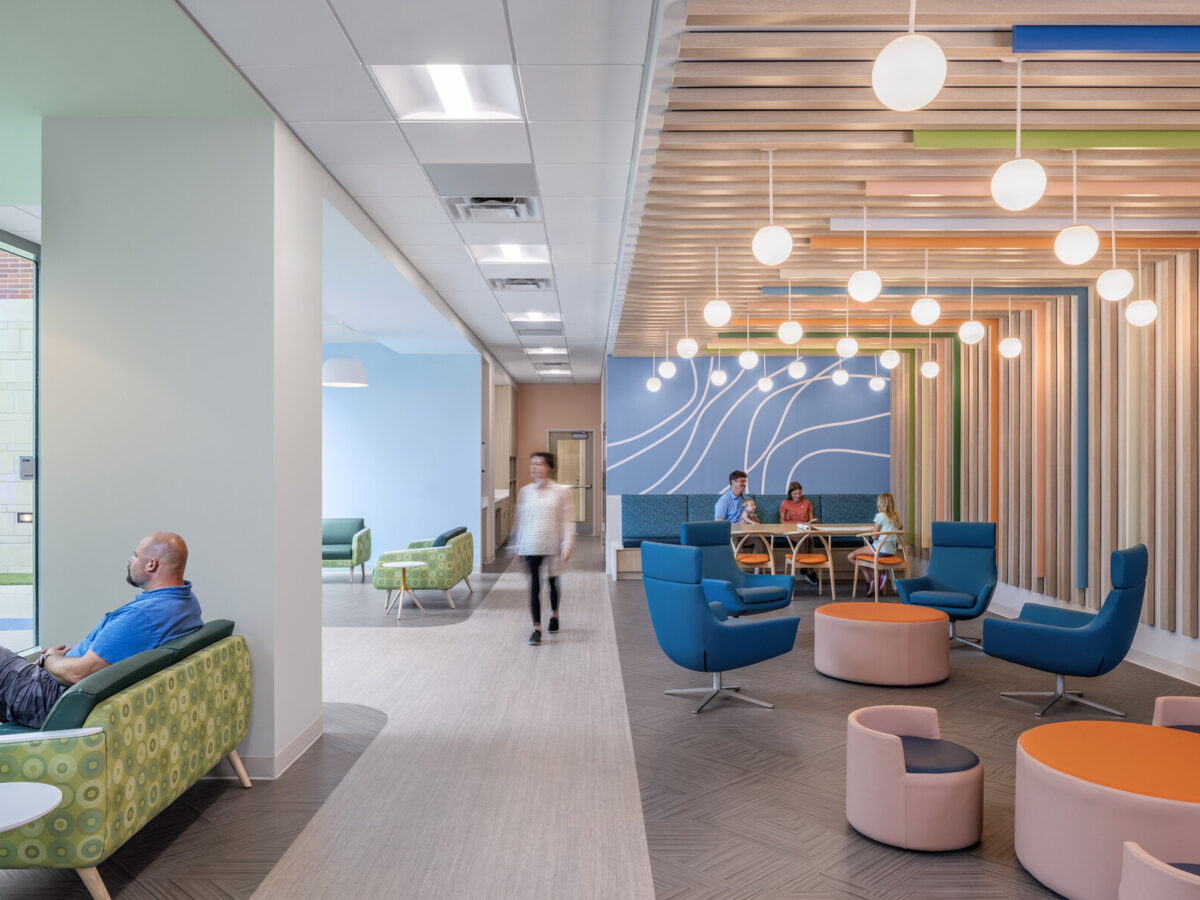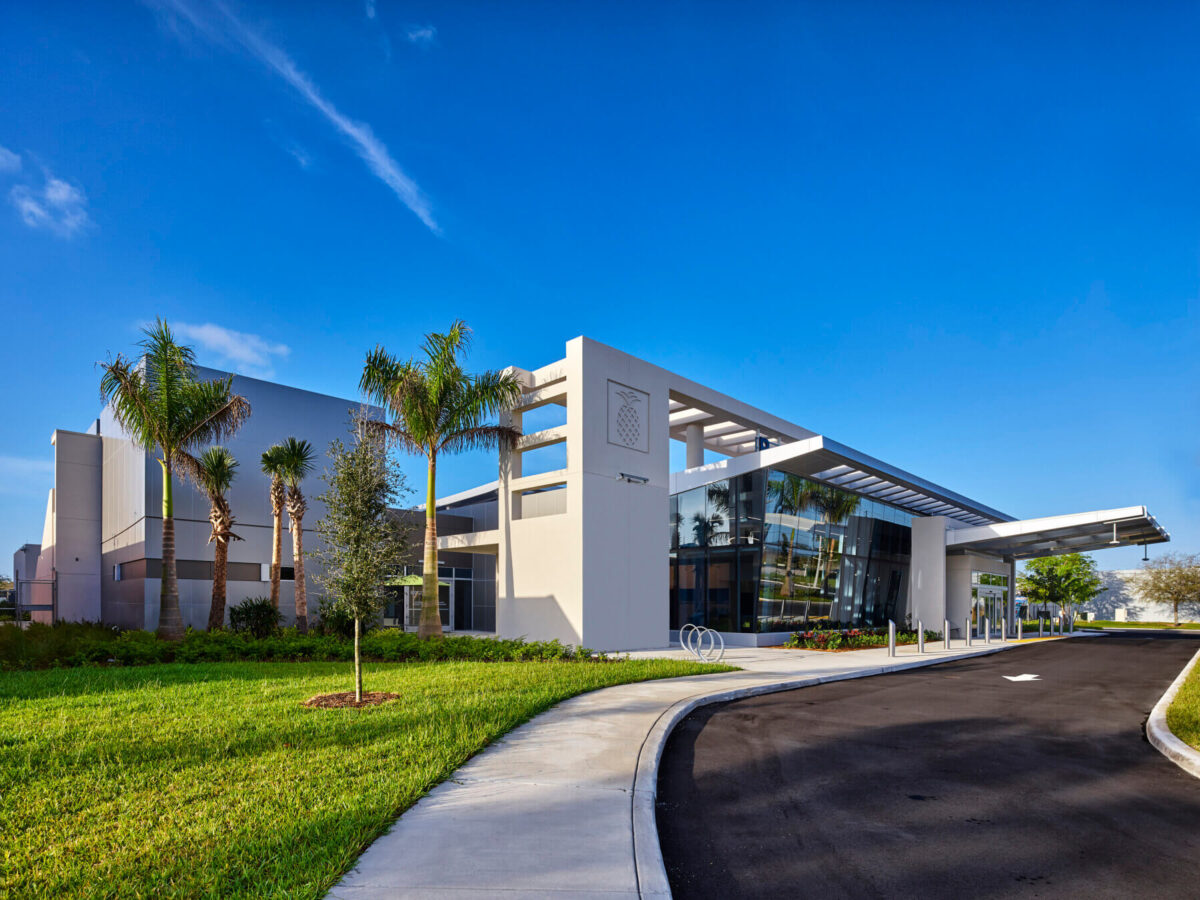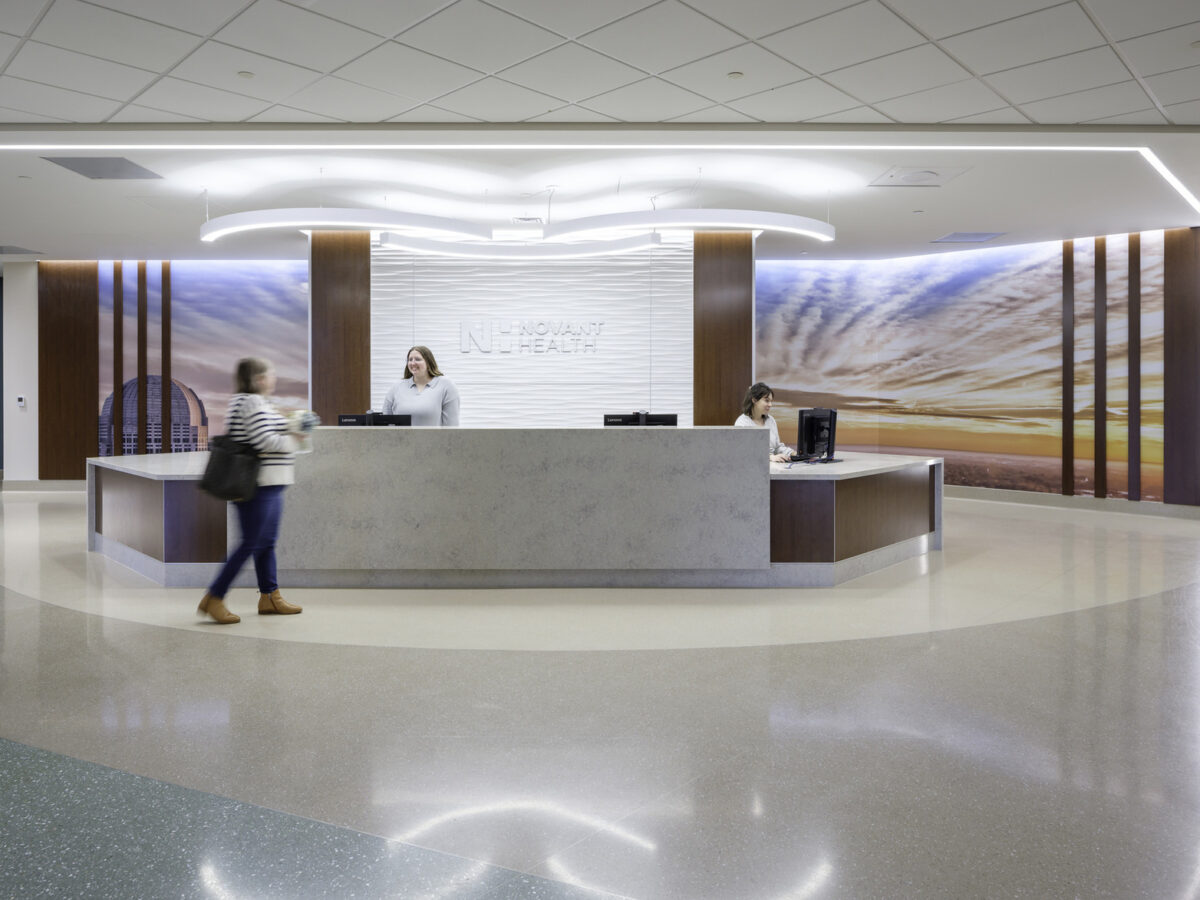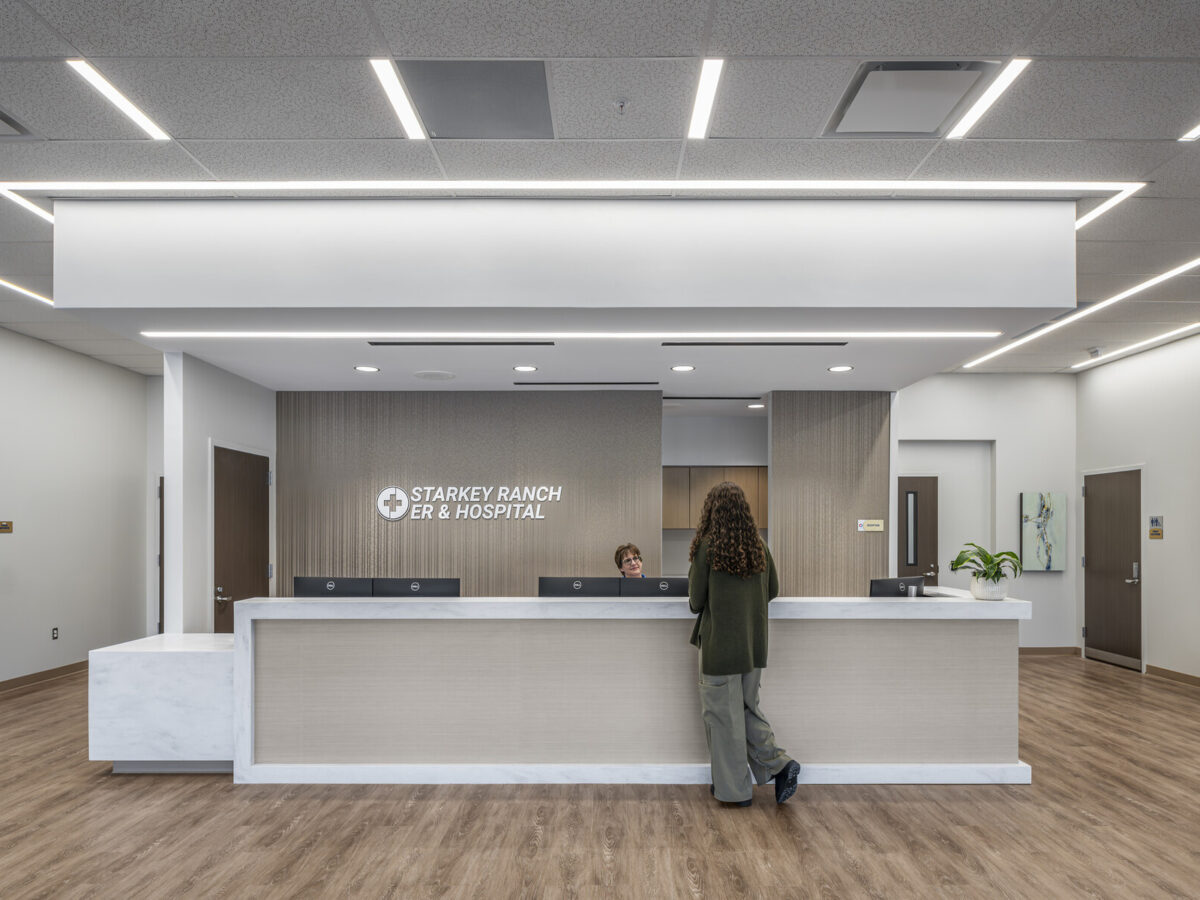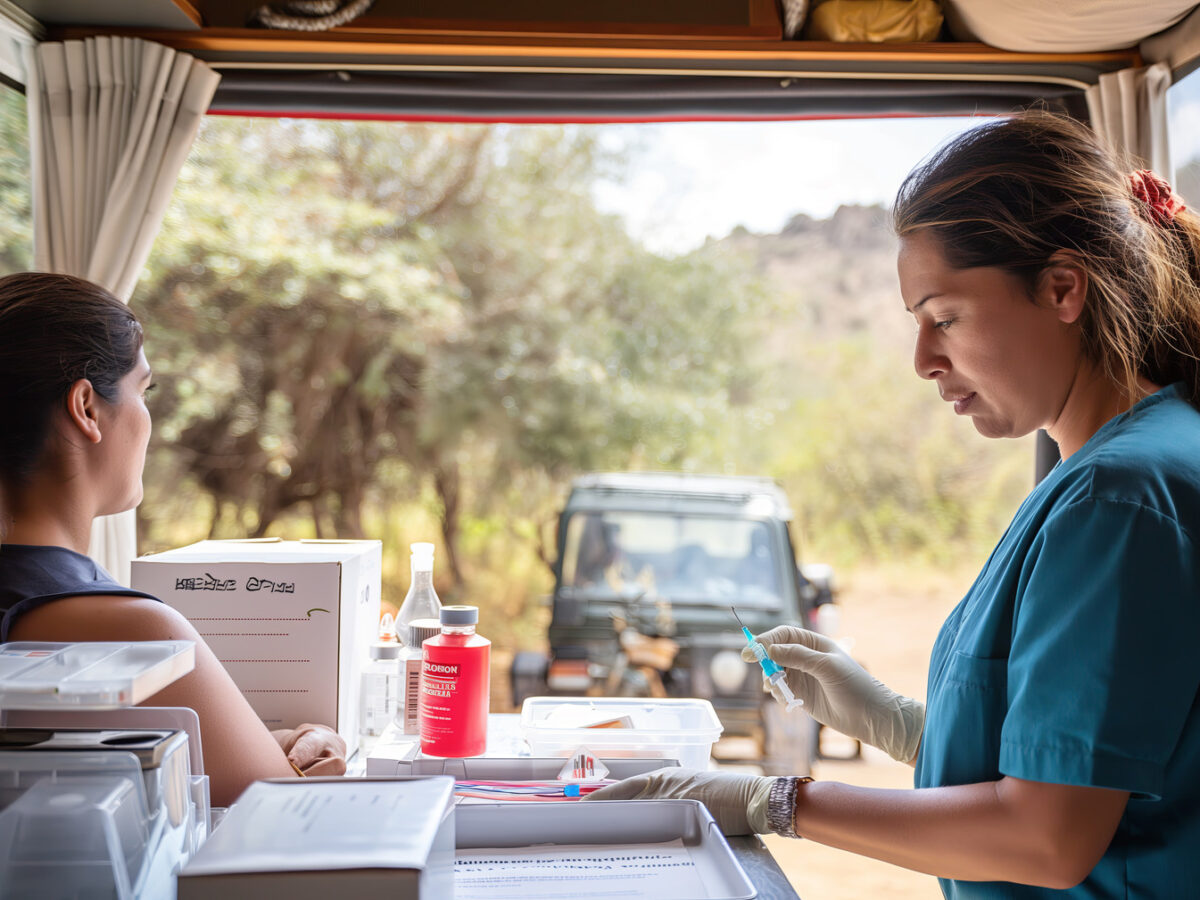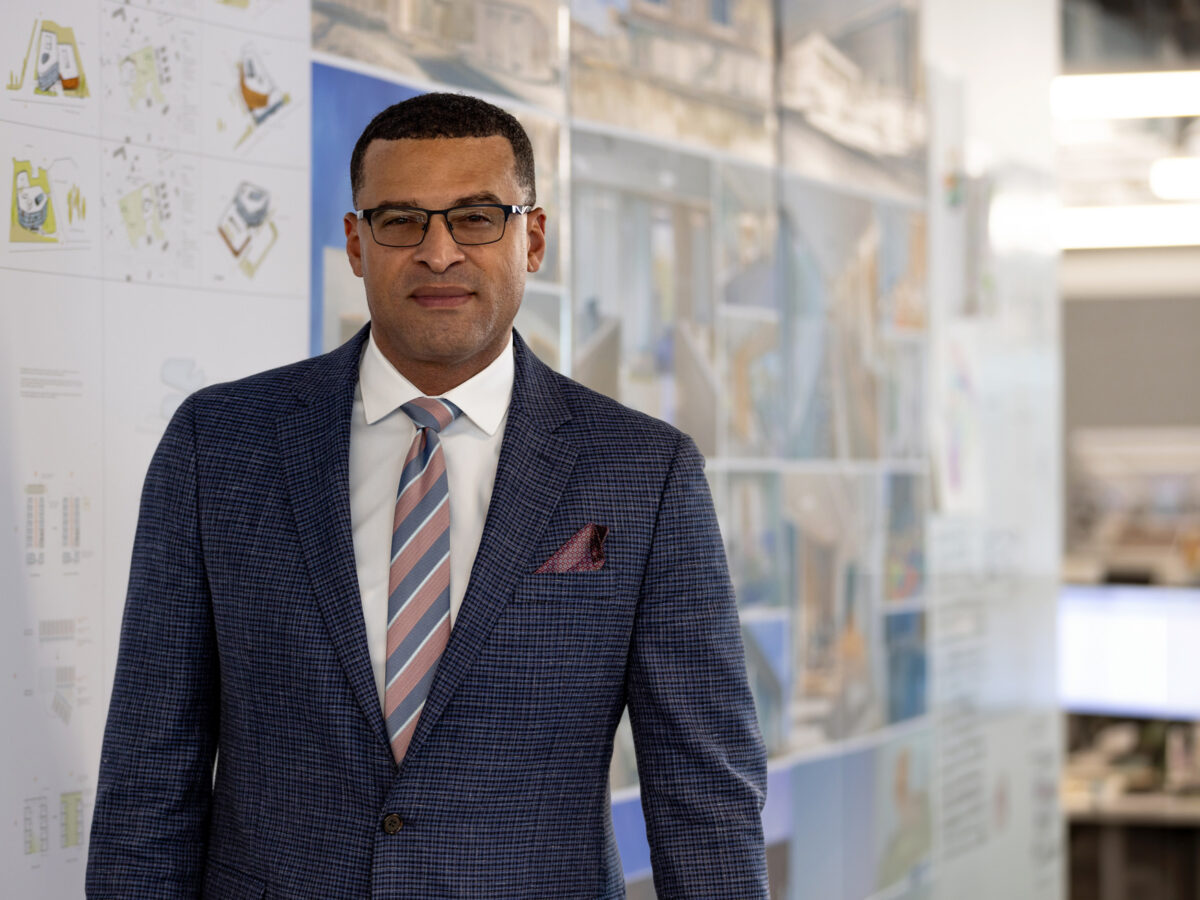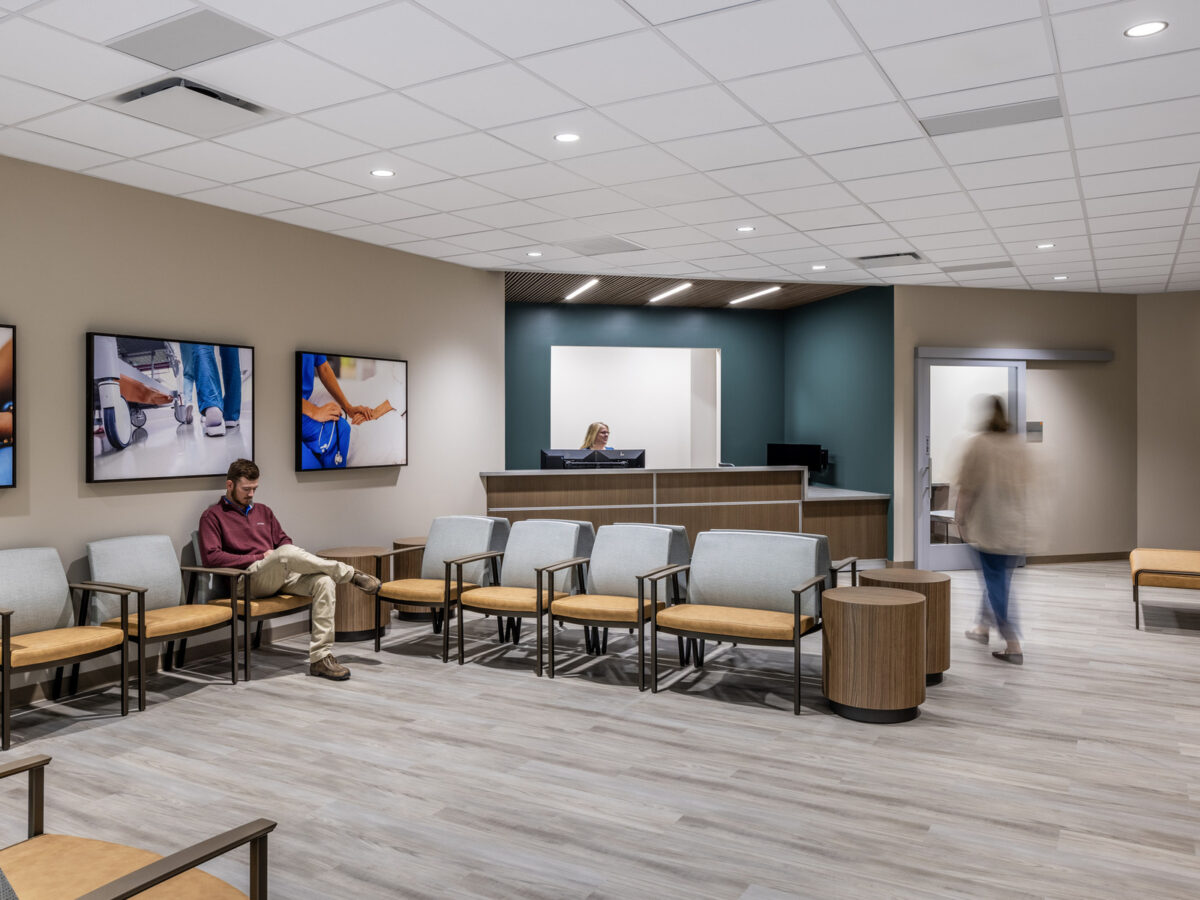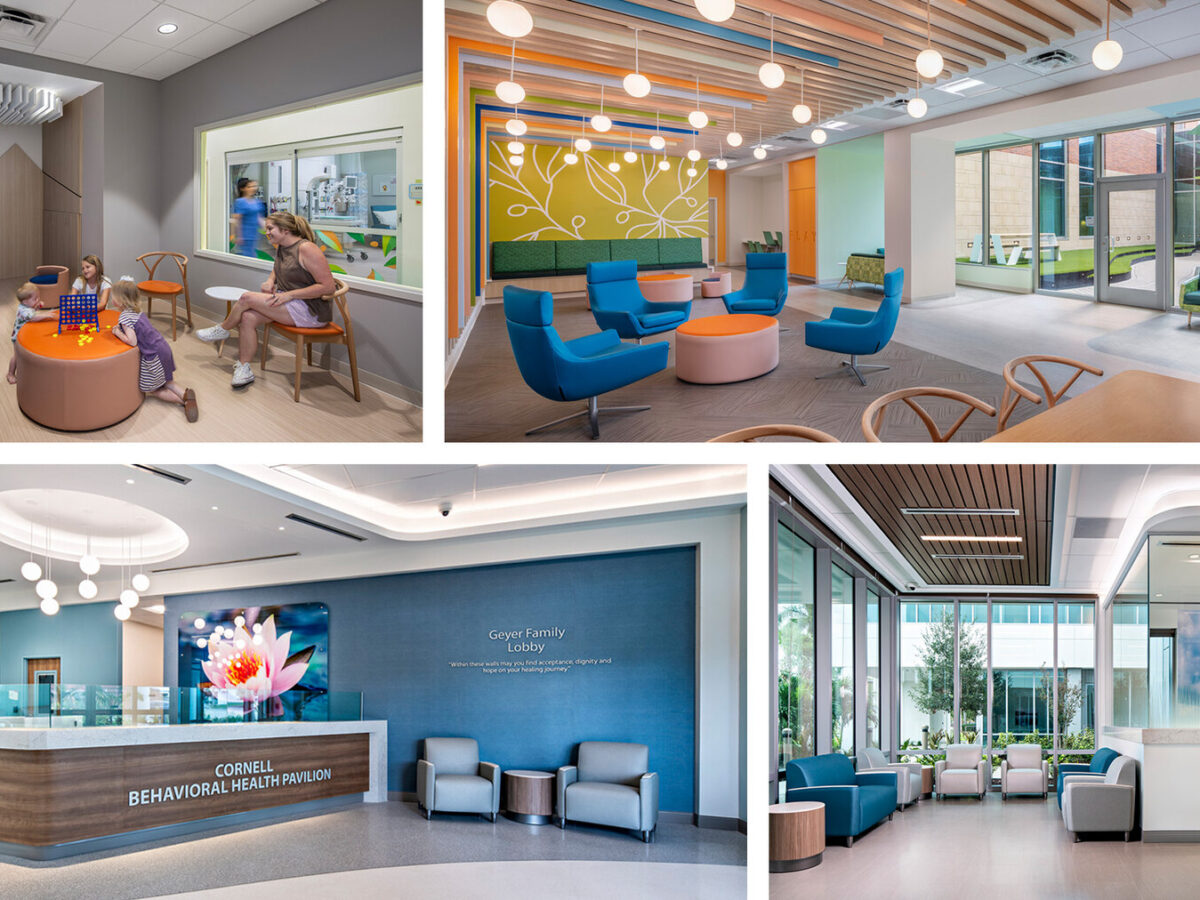Located in Flint, Michigan, the Karmanos Cancer Institute at McLaren Health Care’s Flint Medical Center uses an advanced proton therapy treatment approach to care for cancer patients. Once considered cost-prohibitive, proton therapy is now one of the most promising cancer treatments – particularly for brain, breast, prostate and ocular tumors, and for certain pediatric cancers.
Proton therapy is a precise radiation therapy that destroys cancer cells without extensive damage to the surrounding healthy tissue. Treatment is painless and quick, and the side effects that patients experience are less severe as compared to standard radiation therapy.
Earlier this year, McLaren Health Care announced an 8,500-square-foot expansion of the proton therapy institute, which includes a 3,000-square-foot fit-out and renovation for a third proton therapy vault. Since McLaren Health Care made the announcement, LEO Cancer Care, a leader in developing technology to deliver radiation therapy to cancer patients, created a revolutionary upright treatment and imaging system named Marie that occupies half the amount of space compared to previous proton therapy systems.
As a result, McLaren Health Care asked Gresham Smith to design the expansion for four proton therapy vaults, to accommodate two of LEO’s Marie system in the same space projected for a single gantry system.
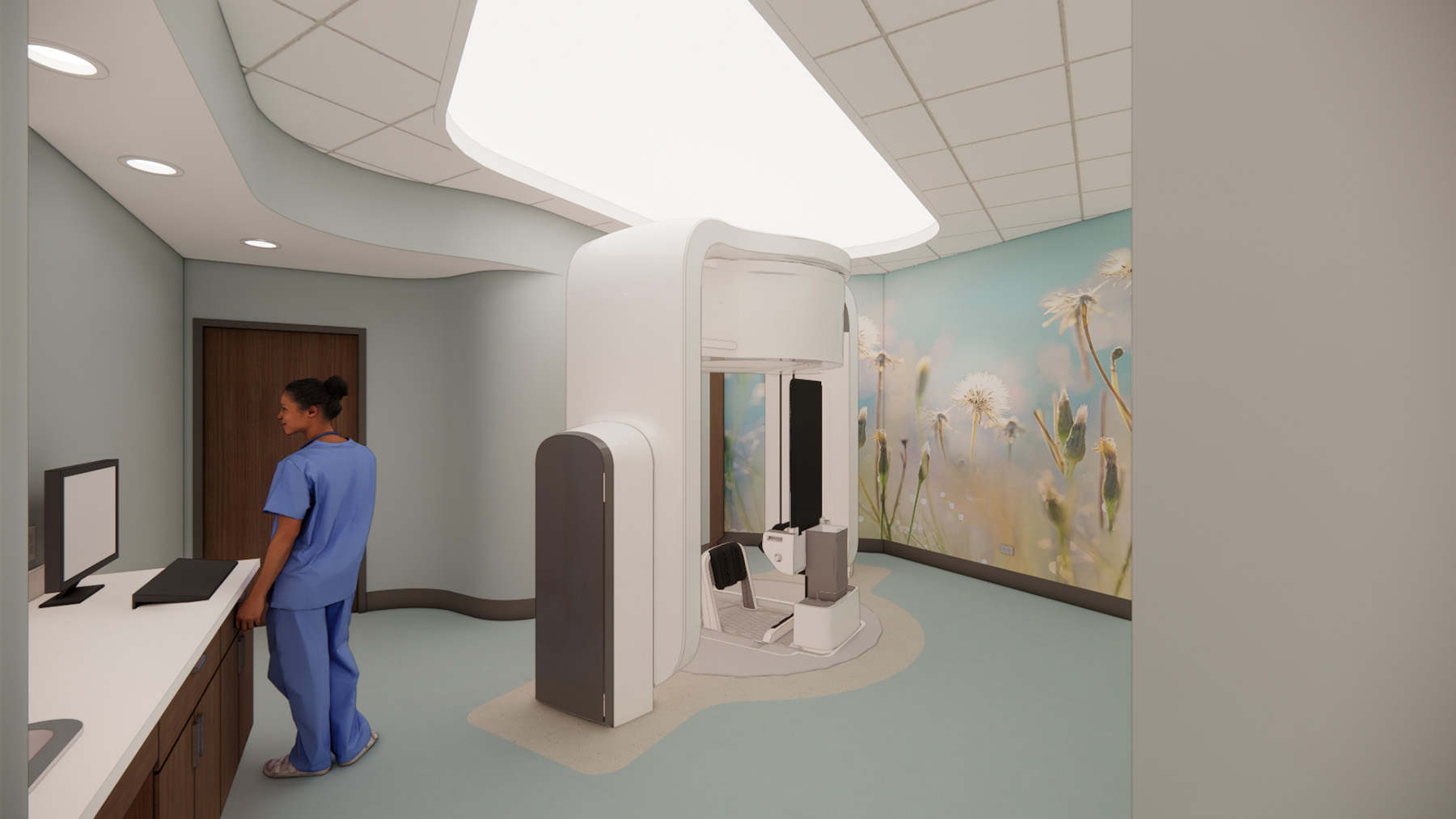
Designing for Proton Therapy
Proton therapy requires an extensive amount of technology, for both the set up and treatment processes. Staff members are not allowed inside the vault during treatment, meaning the entire process is carried out through cameras and robotics. Additionally, the entire system from patient chair to equipment vault to beam delivery nozzle, and in-room imaging capabilities are highly specialized as well.
For safety purposes, treatment rooms are surrounded by concrete walls that are four to eight feet thick. Additionally, electrical conduit placement requires extensive collaboration with engineering partners to guarantee the efficacy of the concrete shielding design.
The complexity of the treatment technology, combined with the design requirements for the specialized treatment space, often mean that it’s expensive to build the facilities necessary for delivering proton therapy.
A Revolutionary Treatment System
Recently, LEO Cancer Care developed a new upright treatment and imaging system for proton therapy. The patient is seated in a natural, vertical position, which allows the chair to move the patient in front of the static proton beam, reducing the need for the tons of steel and concrete that support traditional systems, which rotate around the patient. In addition, the upright system improves cardiovascular functions, allows for more consistent breathing, enables eye contact with the care provider and reduces radiation exposure to the surrounding organs.
The vertical equipment layout is the first of its kind and cuts the amount of space needed to perform treatment in half. The implications of this revolutionary layout are enormous, from increased capacity in treatment facilities and improved interaction with the care team to enhanced speed to market.
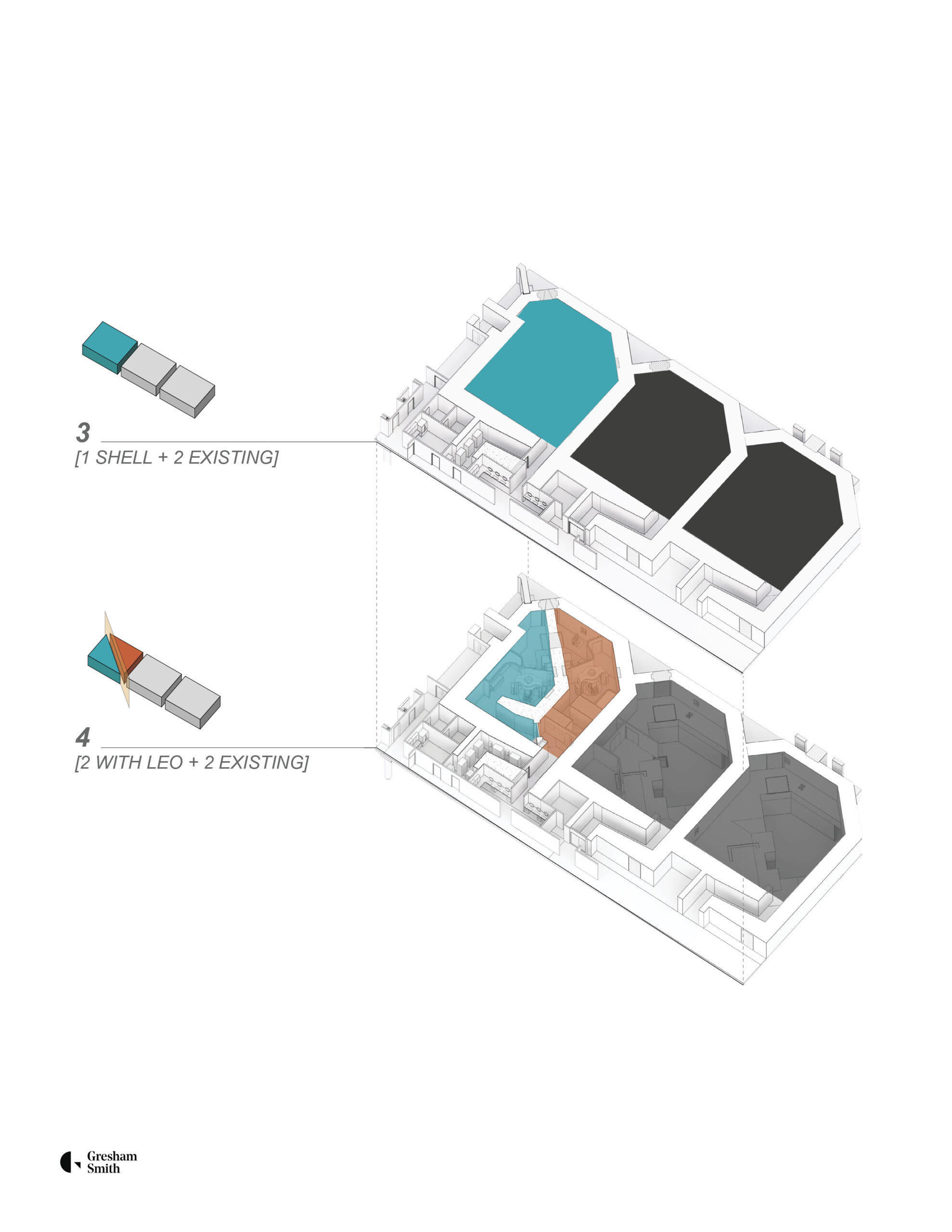
Altering our Approach
When McLaren Health Care built the Karmanos Cancer Institute in late 2012, it was designed to house three traditional, rotating gantry proton vaults. Two of the vaults were fully built out, while one was shelled for future expansion. When LEO Cancer Care developed their new upright treatment, McLaren Health Care asked Gresham Smith to plan and design a space to meet the needs of the new groundbreaking technology, while also providing flexibility for the future.
Due to the new equipment size, the third treatment vault could be split into two smaller rooms—two new treatment spaces instead of one. The square footage of each proton therapy vault is roughly the same size as a surgery room, but includes significantly more technology and thick concrete walls. Since our design essentially divides the room in half, we needed supplemental mechanical, electrical, plumbing, and power systems, as well as additional IT technology. Our design also calls for a second nozzle and divider in the beam room.
- An Intricate Install: When construction begins later this year, we’ll have to make sure the treatment technology is loaded into the room in the correct sequence and installed properly—the specialized proton therapy technology is what’s ultimately treating the patient! Our design calls for bump outs in the center concrete wall to allow for the installation of an A frame, which will enable the technology to be vertically lifted and placed in the space. And, since we know that the technology will continue to advance, this will also give the cancer institute a viable option for replacing the system in the future.
- A Phased Approach: Given the exterior shell of the vault is made of thick concrete that needed to be altered, we are carefully planning how and where construction will take place. Our goal is to keep as much of the existing concrete as possible, to minimize operational disruptions to the existing facility and the operational proton therapy vaults next door and to minimize costs.
- Careful Collaboration: When we looked at the specs of the room and LEO’s new upright treatment technology, we noticed that there was a discrepancy between the height of the beam line and the height of the chair. This would have required significant excavation to lower the floor height, driving up cost and extending the construction timeline. To avoid this, we worked with LEO to modify the chair to resolve the issue without compromising the treatment process.
- Keeping the Client in Mind: McLaren Health Care seeks to maintain operations and patient treatment with minimal interruptions, while also creating a new space that is innovative and supportive of both patients and staff. The new vaults include side by side control rooms with direct access to the treatment area, as well as a centralized storage area, technical room and IT closet, all of which will enhance staff workflow. To create a welcoming atmosphere for patients, the selected curves and finishes will resemble a serine home, and images of nature are spread throughout the treatment area.
Plan First, Design Second
Being adaptable to McLaren Health Care’s needs when designing the Karmanos Cancer Institute expansion, our team found an innovative way to work with both LEO Cancer Care and the hospital to bring a first-in-the-world treatment program to Flint, Michigan. By repurposing the existing space to suit the needs of revolutionary technology, we are doubling treatment capacity and supporting improved patient outcomes. Additionally, by acknowledging that treatment technology will continue to evolve and designing for future changes, our team is setting the Karamanos Cancer Institute up for success.

